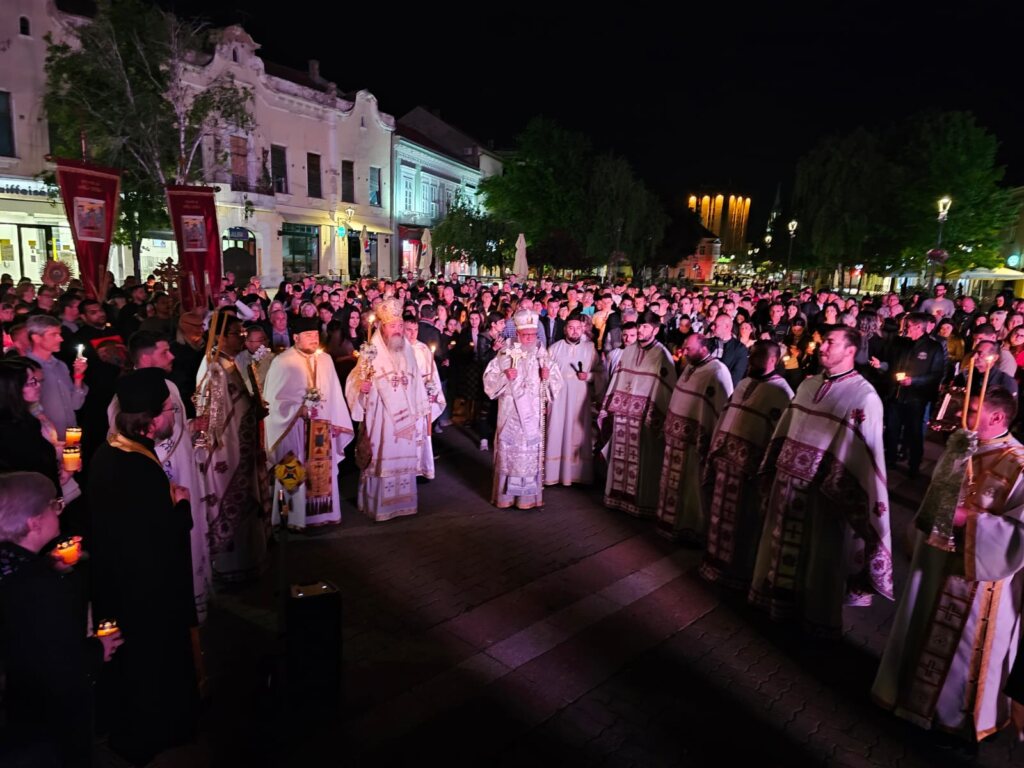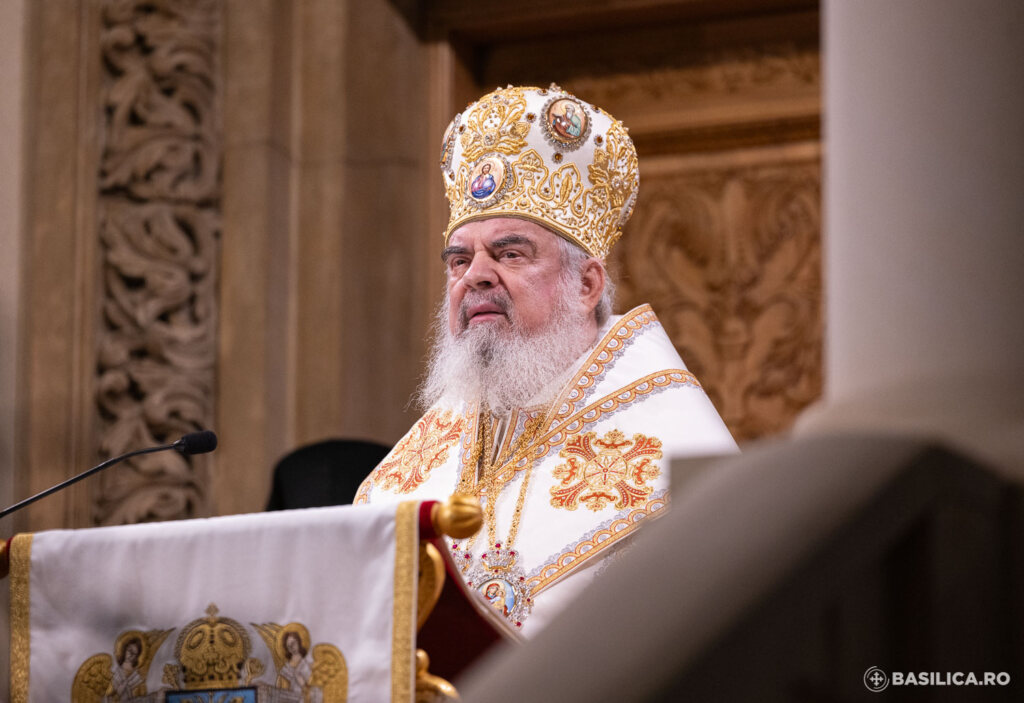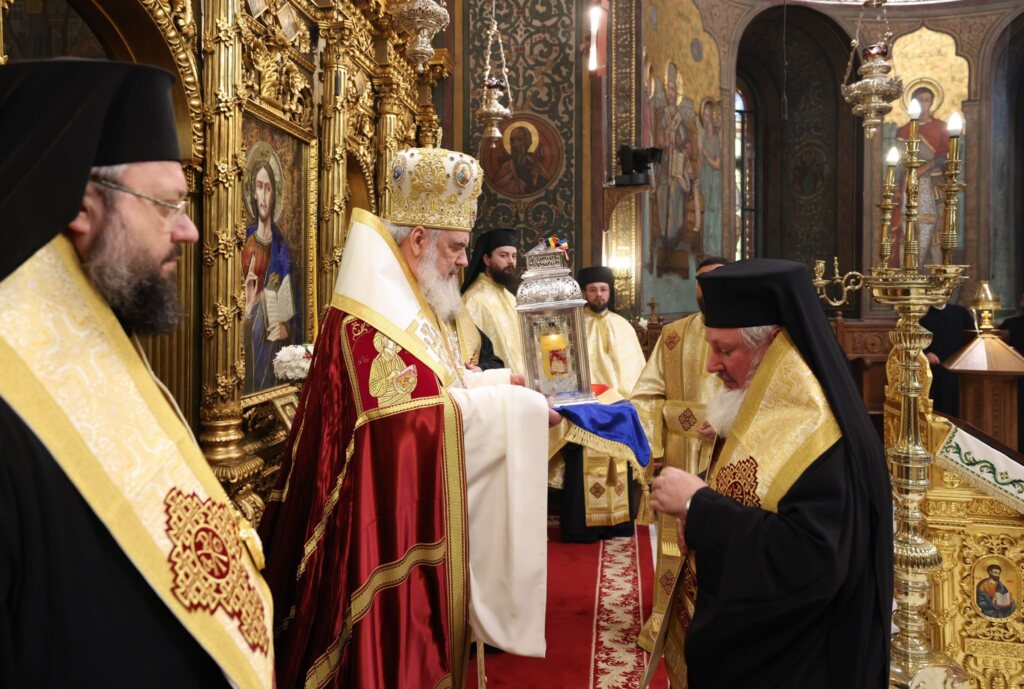Orthodox Calendar, April 29
Holy Week: A Liturgical Explanation for the Days of Holy Week
MONDAY, TUESDAY, WEDNESDAY: THE END
These three days, which the Church calls Great and Holy have within the liturgical development of the Holy Week a very definite purpose. They place all its celebrations in the perspective of End Times; they remind us of the eschatological meaning of Pascha. So often Holy Week is considered one of the “beautiful traditions” or “customs,” a self-evident “part” of our calendar. We take it for granted and enjoy it as a cherished annual event which we have “observed” since childhood, we admire the beauty of its services, the pageantry of its rites and, last but not least, we like the fuss about the Paschal table. And then, when all this is done we resume our normal life. But do we understand that when the world rejected its Savior, when “Jesus began to be sorrowful and very heavy… and his soul was exceedingly sorrowful even unto death,” when He died on the Cross, “normal life” came to its end and is no longer possible. For there were “normal” men who shouted “Crucify Him” who spat at Him and nailed Him to the Cross. And they hated and killed Him precisely because He was troubling their normal life. It was indeed a perfectly “normal” world which preferred darkness and death to light and life…. By the death of Jesus the “normal” world, and “normal” life were irrevocably condemned. Or rather they revealed their true and abnormal inability to receive the Light, the terrible power of evil in them. “Now is the Judgment of this world” (John 12:31). The Pascha of Jesus signified its end to “this world” and it has been at its end since then. This end can last for hundreds of centuries, but this does not alter the nature of time in which we live as the “last time.” “The fashion of this world passeth away…” (I Cor. 7:31).
Pascha means passover, passage. The feast of Passover was for the Jews the annual commemoration of their whole history as salvation, and of salvation as passage from the slavery of Egypt into freedom, from exile into the promised land. It was also the anticipation of the ultimate passage—into the Kingdom of God. And Christ was the fulfillment of Pascha. He performed the ultimate passage: from death into life, from this “old world” into the new world into the new time of the Kingdom. And he opened the possibility of this passage to us. Living in “this world” we can already be “not of this world,” i.e. be free from slavery to death and sin, partakers of the “world to come.” But for this we must also perform our own passage, we must condemn the old Adam in us, we must put on Christ in the baptismal death and have our true life hidden in God with Christ, in the “world to come….”
And thus Easter is not an annual commemoration, solemn and beautiful, of a past event. It is this Event itself shown, given to us, as always efficient, always revealing our world, our time, our life as being at their end, and announcing the Beginning of the new life…. And the function of the three first days of Holy Week is precisely to challenge us with this ultimate meaning of Pascha and to prepare us to the understanding and acceptance of it.
1. This eschatological (which means ultimate, decisive, final) challenge is revealed, first, in the common troparion of these days:
Troparion—Tone 8
Behold the Bridegroom comes at midnight,
And blessed is the servant whom He shall find watching,
And again unworthy is the servant whom He shall find heedless.
Beware, therefore, O my soul, do not be weighed down with sleep,
Lest you be given up to death and lest you be shut out of the Kingdom.
But rouse yourself crying: Holy, Holy, Holy, are You, O our God!
Through the Theotokos have mercy on us!
Midnight is the moment when the old day comes to its end and a new day begins. It is thus the symbol of the time in which we live as Christians. For, on the one hand, the Church is still in this world, sharing in its weaknesses and tragedies. Yet, on the other hand, her true being is not of this world, for she is the Bride of Christ and her mission is to announce and to reveal the coming of the Kingdom and of the new day. Her life is a perpetual watching and expectation, a vigil pointed at the dawn of this new day. But we know how strong is still our attachment to the “old day,” to the world with its passions and sins. We know how deeply we still belong to “this world.” We have seen the light, we know Christ, we have heard about the peace and joy of the new life in Him, and yet the world holds us in its slavery. This weakness, this constant betrayal of Christ, this incapacity to give the totality of our love to the only true object of love are wonderfully expressed in the exapostilarion of these three days:
“Thy Bridal Chamber I see adorned, O my Savior
And I have no wedding garment that I may enter,
O Giver of life, enlighten the vesture of my soul
And save me.”
2. The same theme develops further in the Gospel readings of these days. First of all, the entire text of the four Gospels (up to John 13: 31) is read at the Hours (1, 3, 6 and 9). This recapitulation shows that the Cross is the climax of the whole life and ministry of Jesus, the Key to their proper understanding. Everything in the Gospel leads to this ultimate hour of Jesus and everything is to be understood in its light. Then, each service has its special Gospel lesson :
On Monday:
At Matins: Matthew 21: 18-43—the story of the fig tree, the symbol of the world created to bear spiritual fruits and failing in its response to God.
At the Liturgy of the Presanctified Gifts: Matthew 24: 3-35: the great eschatological discourse of Jesus. The signs and announcement of the End. “Heaven and earth shall pass away, but my words shall not pass away….”
“When the Lord was going to His voluntary Passion,
He said to His Apostles on the way:
Behold, we go up to Jerusalem,
And the Son of Man shall be delivered up
As it is written of Him.
Come, therefore, and let us accompany Him,
With minds purified from the pleasures of this life,
And let us be crucified and die with Him,
That we may live with Him,
And that we may hear Him say to us:
I go now, not to the earthly Jerusalem to suffer,
But unto My Father and your Father
And My God and your God,
And I will gather you up into the heavenly Jerusalem,
Into the Kingdom of Heaven….”
(Monday Matins)
by: The Very Reverend Alexander Schmemann
The Holy Martyrs at Cyzicus
The city of Cyzicus is in Asia Minor on the coast of the Dardenelles (Hellespont). Christianity already began to spread there through the preaching of Saint Paul (June 29). During the persecutions by the pagans, some of the Christians fled the city, while others kept their faith in Christ in secret.
At the end of the third century Cyzicus was still basically a pagan city, although there was a Christian church there. The situation in the city distressed the Christians, who sought to uphold Christianity.
The nine holy martyrs Thaumasius, Theognes, Rufus, Antipater, Theostichus, Artemas, Magnus, Theodotus, and Philemon were also from Cyzicus. They came from various places, and were of different ages: the young like Saint Antipater, and the very old like Saint Rufus. They came from various positions in society: some were soldiers, countryfolk, city people, and clergy. All of them declared their faith in Christ, and prayed for the spread of Christianity.
The saints boldly confessed Christ and fearlessly denounced the pagan impiety. They were arrested and brought to trial before the ruler of the city. Over several days they were tortured, locked in prison and brought out again.
They were promised their freedom if they renounced Christ. But the valiant martyrs of Christ continued to glorify the Lord. All nine martyrs were beheaded by the sword (+ ca. 286-299), and their bodies buried near the city.
In the year 324, when the Eastern half of the Roman Empire was ruled by Saint Constantine the Great (May 21), and the persecutions against Christians ended, the Christians of Cyzicus removed the incorrupt bodies of the martyrs from the ground and placed them in a church built in their honor.
Various miracles occurred from the holy relics: the sick were healed, and the mentally deranged were brought to their senses. The faith of Christ grew within the city through the intercession of the holy martyrs, and many of the pagans were converted to Christianity.
When Julian the Apostate (361-363) came to rule, the pagans of Cyzicus complained to him that the Christians were destroying pagan temples. Julian gave orders to rebuild the pagan temples and to jail Bishop Eleusius. Bishop Eleusius was set free after Julian’s death, and the light of the Christian Faith shone anew through the assistance of the holy martyrs.
In Russia, not far from the city of Kazan, a monastery was built in honor of the Nine Martyrs of Cyzicus. It was built by the hierodeacon Stephen, who brought part of the relics of the saints with him from Palestine. This monastery was built in the hope that through their intercession and prayers people would be delivered from various infirmities and ills, particularly a fever which raged through Kazan in 1687.
Saint Demetrius of Rostov (September 21), who composed the service to the Nine Martyrs, writes, “through the intercession of these saints, abundant grace was given to dispel fevers and trembling sicknesses.” Saint Demetrius also described the sufferings of the holy martyrs and wrote a sermon for their Feast day.
Troparion — Tone 8
By Divine command, the Holy Nine Martyrs from various cities were united in a single alliance, and courageously suffered martyrdom for Christ; / by your patience, the invisible enemy1 was defeated, / the wicked princes and tormentors were put to shame, / the spiritual fire of love for God was kindled, and the material fire which tormented you was cooled. / Therefore, grace has been given unto you by Christ God to heal the plague, / and we pray that you will save us from it, and from other afflictions, by your protection.

Saint Memnon the Wonderworker
From his youth he lived in the Egyptian desert. By his arduous ascetical efforts, he attained a victory of spirit over the flesh.
As Igumen of one of the Egyptian monasteries, he wisely and carefully guided the brethren. Even while aiding them through prayer and counsel, the saint did not waver in his efforts in the struggle against temptation.
He received the gift of clairvoyance through unceasing prayer and toil. At his prayer a spring of water gushed forth in the wilderness, locusts destroying the harvest perished, and the shipwrecked who called on his name were saved. After his death, the mere mention of his name dispelled a plague of locusts and undid the cunning wiles of evil spirits.
Troparion — Tone 8
By a flood of tears you made the desert fertile, / and your longing for God brought forth fruits in abundance. / By the radiance of miracles you illumined the whole universe! / O our holy father Memnon, pray to Christ our God to save our souls!

Tr by oca.org






